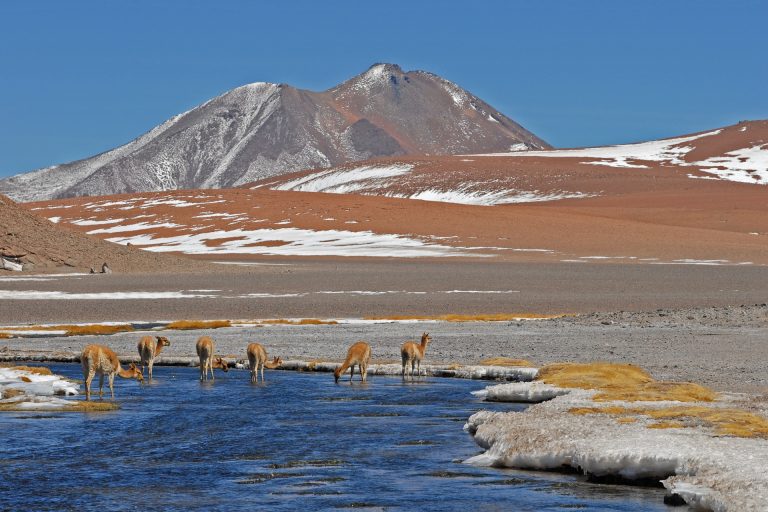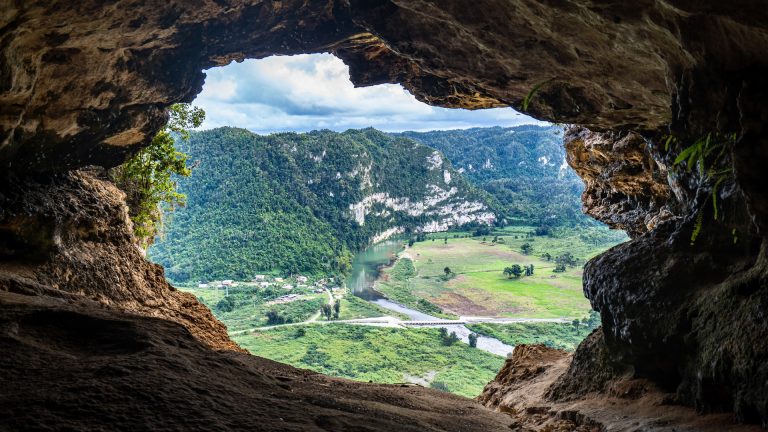Unveiling BOLIVIA’s Beauty: A Comprehensive Bolivia Travel Guide

Welcome to the captivating world of Bolivia. In this comprehensive Bolivia travel guide, we will equip you with essential insights for an unforgettable journey through this South American gem. From stunning salt flats to ancient ruins, local cuisine to accommodation tips, we’ve curated valuable information to help you make the most of your adventure.
Fast Facts About Bolivia
- Climate: Bolivia’s climate varies widely due to its diverse geography. From the lowlands to the high Andes, you’ll experience everything from tropical to chilly temperatures. Be prepared for these changes when packing.
- Local Currency: The Bolivian Boliviano (BOB) is the official currency. While credit cards are accepted in urban areas, it’s advisable to carry some cash, especially when visiting rural regions.
- Power Voltage: Bolivia uses a power voltage of 220V and a frequency of 50Hz. Don’t forget your travel adapter and voltage converter to keep your devices charged.
- Language: The primary language spoken is Spanish. While English isn’t widely spoken, having a basic grasp of Spanish phrases can go a long way in navigating the country.
- Religion: Catholicism is the predominant religion in Bolivia. You’ll find numerous churches and religious festivals that provide insights into the local culture.
- Safety: Generally, Bolivia is safe for travelers, but like any destination, exercise caution, especially in crowded places. Keep your belongings secure and be aware of your surroundings.
- Cultural Etiquette: Bolivians are known for their warmth and politeness. It’s customary to greet people with a handshake and a smile. Respect local customs and traditions to make the most of your interactions.
- Tipping: Tipping isn’t mandatory, but it’s appreciated. In restaurants, a 10% tip is customary if service isn’t included. For other services, a small tip is a nice gesture.
Best Time to Visit Bolivia: Seasons and Festivals
- Dry Season (May – October): This is generally the best time to visit. The weather is pleasant, and you’ll have clear views of the stunning landscapes. It’s ideal for trekking and exploring the outdoors.
- Rainy Season (November – April): While rain is more frequent, this season has its charm. The countryside is lush and vibrant, and it’s a great time for wildlife enthusiasts.
- Carnival (February/March): Celebrated nationwide, this vibrant festival features parades, dances, and water fights. The city of Oruro hosts one of the most famous Carnival events.
- Dia del Mar (March 23rd): Commemorating Bolivia’s loss of coastal territory, this day includes patriotic events and parades.
- Inti Raymi (June 24th): Also known as the Festival of the Sun, this Inca festival marks the winter solstice. It’s celebrated with colorful ceremonies and traditional dances.
- Todos Santos (November 1st): Bolivia’s Day of the Dead is a blend of indigenous rituals and Catholic traditions. Cemeteries are adorned with candles, food, and offerings for deceased loved ones.
- Gran Poder (May/June): La Paz hosts this energetic festival, showcasing vibrant costumes, traditional dances, and lively music.
Top Attractions and Things to See and Do in Bolivia
- Salar de Uyuni: Prepare to be amazed by the world’s largest salt flat. Spanning over 10,000 square kilometers, this natural wonder creates a mesmerizing mirror effect after rain.
- Tiwanaku: Explore the ancient ruins of a pre-Columbian city. These archaeological treasures offer insights into Bolivia’s rich history and Inca civilization.
- Lake Titicaca: Discover the world’s highest navigable lake, nestled between Bolivia and Peru. Take a boat ride to the fascinating Uros Islands, made entirely of reeds.
- Sucre: Wander through charming streets in the constitutional capital of Bolivia. This UNESCO World Heritage site boasts stunning colonial architecture and a laid-back atmosphere.
- Potosi Mines: Gain a unique perspective by visiting the silver mines of Potosi. You’ll witness the miners’ way of life and the challenges they face daily.
- Madidi National Park: Immerse yourself in biodiversity at this park, known as one of the most biologically diverse places on Earth. Trek through lush rainforests and encounter exotic wildlife.
- Witches’ Market in La Paz: Experience Bolivia’s mysticism at this bustling market. From potions to llama fetuses, you’ll find intriguing items used in Andean rituals.
The Best Ways To Get Around Bolivia
- Domestic Flights: With various regional airports, flying can save time when covering long distances between major cities like La Paz, Santa Cruz, and Cochabamba.
- Buses: Bolivia’s extensive bus network connects most cities and towns. Choose between different classes, from basic to semi-cama (reclining seats) for added comfort.
- Trains: The scenic train ride from Oruro to Uyuni offers breathtaking views of the Andes and is an experience in itself. Check schedules and routes in advance.
- Taxis and Ride-Sharing: Taxis are readily available in cities. Opt for authorized radio taxis for safety. Ride-sharing apps are also gaining popularity, especially in La Paz.
- Boats: Given Bolivia’s unique geography, boats are essential for reaching places like Lake Titicaca’s islands and the Amazon rainforest lodges.
Accommodation Tips: Bolivia
- Hostels and Guesthouses: If you’re a budget-conscious traveler, hostels and guesthouses are widespread and offer affordable options with shared or private rooms.
- Boutique Hotels: For a more unique experience, consider staying in boutique hotels. These often have charming décor and provide a cozy atmosphere.
- Eco-Lodges: Immerse yourself in nature by choosing eco-lodges. These accommodations blend seamlessly with their surroundings and offer a sustainable stay.
- Booking in Advance: While not always necessary, booking accommodations in advance during peak tourist seasons ensures you have a comfortable place to stay upon arrival.
- Homestays: Experience Bolivian hospitality firsthand by staying with a local family. This is a fantastic way to learn about the culture and daily life.
Bolivia Travel Guide: Money-Saving Tips
- Local Eateries: Dine like a local at market stalls and small eateries. You’ll savor authentic flavors while keeping your budget in check.
- Public Transport: Opt for buses and local transportation to save on getting around. They’re not only cost-effective but also offer a glimpse into daily life.
- Free Attractions: Bolivia has plenty of free attractions, from exploring vibrant markets to hiking scenic trails. These experiences offer a rich cultural immersion without spending a dime.
- Shared Tours: Consider joining shared group tours for attractions. This way, you can split costs while still enjoying guided experiences.
- Haggle Wisely: Bargaining is common in markets. Polite negotiation can help you secure unique souvenirs and goods at better prices.
Culinary Delights and Traditional Cuisine in Bolivia
- Salteñas: Start your day with these savory pastries filled with meat, vegetables, and a slightly spicy sauce. They’re a Bolivian breakfast staple.
- Llajwa: This spicy salsa made from tomatoes and chili peppers accompanies many Bolivian dishes. Dare to give your taste buds a kick!
- Silpancho: Indulge in a hearty dish featuring a thin breaded beef cutlet served with rice, potatoes, and fried eggs.
- Quinoa: As a superfood native to the Andes, quinoa is a common ingredient in Bolivian cuisine. Try it in soups, salads, or stews.
- Chicha: Quench your thirst with chicha, a traditional fermented corn drink. It’s a significant part of Bolivian culture.
Souvenir Ideas: Bringing a Piece of Bolivia Home
- Alpaca Wool Products: Bring home cozy sweaters, scarves, or blankets made from the soft and warm alpaca wool.
- Textiles: Bolivian textiles are vibrant and unique. Look for intricately woven fabrics and traditional patterns.
- Silver Jewelry: Bolivia is known for its silver mines. Purchase intricate silver jewelry pieces as lasting mementos.
- Coca Leaf Products: While coca leaves are a traditional Bolivian item, be aware of restrictions and regulations before considering these as souvenirs.
- Handcrafted Pottery: From decorative pieces to functional pottery, Bolivian artisans create exquisite ceramics that capture the essence of the country.
Additionally, check out our articles about 2023 top travel destinations in the world, and the best holiday destinations in 2024.






